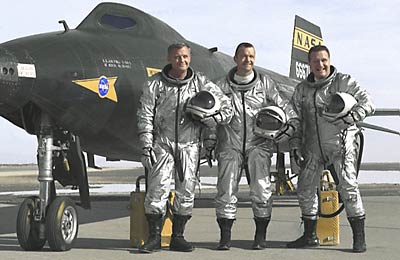Alighting the pilotby Sam Dinkin
|
| As the instrumentation and control of airplanes become more cognitively manageable, the co-pilot is reduced to an expensive insurance policy on the pilot having a heart attack during the flight. |
If teleoperation and robotics are so advanced, why don’t we see robotic cars on the road? Outsourcing cab driving via international teleoperation may be in our future. By obtaining higher utilization rates of drivers who do not need to wait while a cab is in a cab line or otherwise idle, labor costs can be cut by half or more. Again, the first solutions are likely to be assisted driving for competent drivers who would rather watch TV or read the newspaper, but are available to take over in an emergency. Smart highways that simplify the driving task may be needed as a transition.
Teleoperation may come to airplanes before it comes to city streets. Pilots are much more expensive than taxicab drivers. The rules of air travel are also much more narrow and well-defined than the rules of driving. As differential GPS corrections become commonplace at airports, they will be precise enough to enable automatic landing which is already commercially available.
Spacecraft
Spacecraft have had computer operation from very early culminating with the space shuttle. Computer-controlled flight is sensible albeit unromantic. There was a genuine struggle of man vs. machine in the early days of space flight. Man is still having to fight to be a science payload (see “Human Spaceflight is Inevitable”, The Space Review, August 2, 2004) As orbital and lunar tourism get going, it may be time to reverse Gus Grissom’s famous quip from The Right Stuff from “No bucks, no Buck Rogers” to “No Buck Rogers, no bucks.” Gus and the others lost, however, the battle to be pilot:
Grand Designer: We could launch a pod.
Lyndon Johnson: A pot?
Grand Designer: A POD - a, uh, capsule. Now, we would be in full control of zis pod. It vill go up like a cannonball, and come down like, uh, a cannonball, splashing down into ze water, the ocean, vith a parachute to spare the life of the specimen inside.
Lyndon Johnson: Spaceman?
Grand Designer: SPE-CI-MEN.
But mostly the distinction of human vs. electronic pilot was a matter of degree. Even the systems that were human controlled such as X-15 (See “X-15 and today’s spaceplanes”, The Space Review, August 9, 2004) needed to be augmented with electronic stability systems in order to be spaceworthy. Ironically, it may be Burt Rutan who has made SpaceShipOne stable enough to be human piloted through re-entry who may be doing the most to establish automatic and remote operation of orbital travel via his next gig.
| If there is only one person in the craft instead of two or three, a lighter class of booster needs to be used than Soyuz. |
With electronics becoming so light and the addition of a completely autonomous pilot a very minor addition to the already beefy electronic load out of a typical manned orbital vehicle, the weight savings may allow an extra passenger. That instruments need not be human readable and controls need not be used by humans is one factor. Another more exciting factor is that if there is only one person in the craft instead of two or three, a lighter class of booster needs to be used than Soyuz. If a person can be launched on a Falcon 1, which can deliver 670 kilograms to a 200-kilometer, 28° orbit (and a bit more to Rutan’s goal of 130 km), that cuts the price of orbital tourism from $20 million to $6 million. With a beefed-up White Knight able to carry Rutan’s beefed-up SpaceShipOne, we would likely see even lower costs since there would be no retrieval of the first stage and less fuel used from the composite first and second stage than Falcon 1. With the three-seat SpaceShipOne operating cost at $300,000 per flight after four powered flights, the price for a ticket to orbital may be quite a bit lower than $6 million.
Piloted orbital travel will probably need a more expensive booster like Falcon 5, which can deliver 4,200 kg to orbit for $12 million. This is more than five times the payload mass of a Falcon 1 at only twice the price. Certainly if that price difference per kilogram persists in heavier versus lighter orbital launch vehicles, there won’t be too much of an advantage to launching a lighter craft with no pilot. Today’s economics may quickly give way to a new, flatter cost curve where the cost per kilogram of payload is about the same regardless of payload size as more numerous smaller launch options become available.
If two- or three-person crafts are the most economically efficient, then alighting (deplaning) the pilot will free up a seat for another passenger. If pilotless orbital travel ends up costing a third to a half less than piloted orbital travel, then it is very likely that Man will pay a hefty price if he is unsatisfied being “in the undignified position of sitting in a nose cone acting as a biological specimen.”
